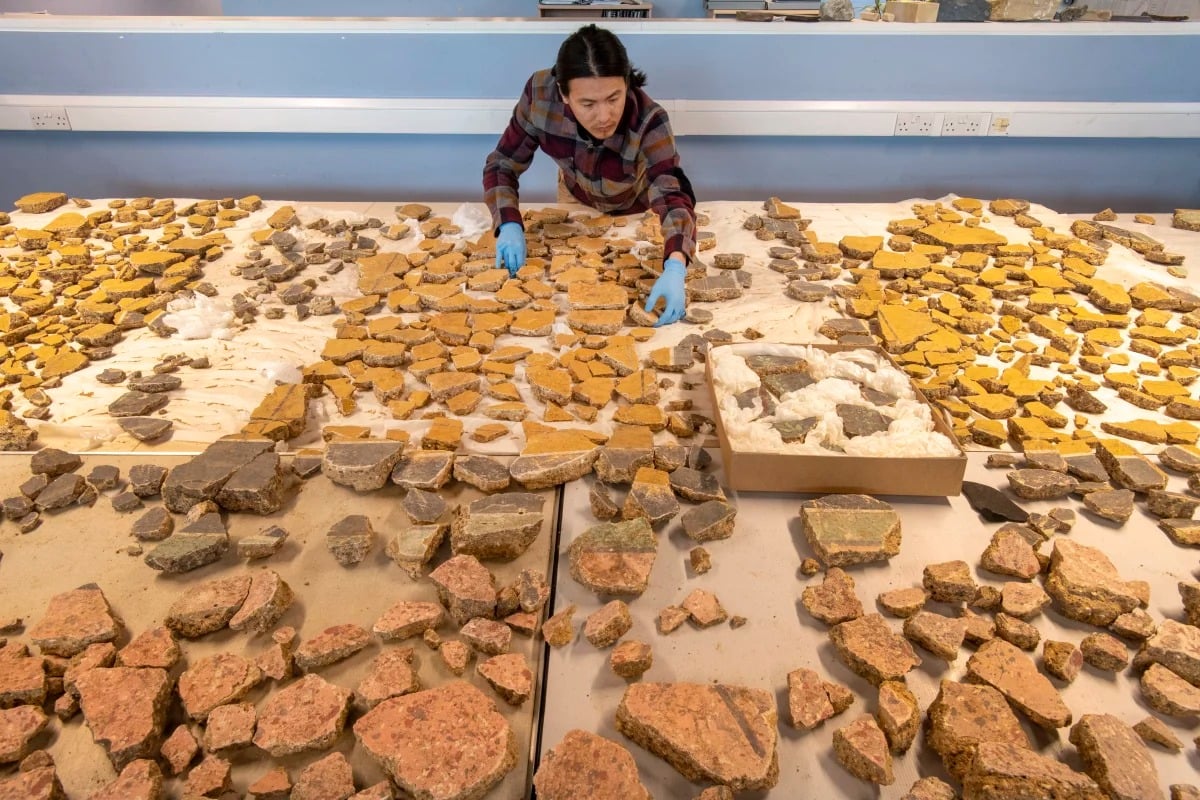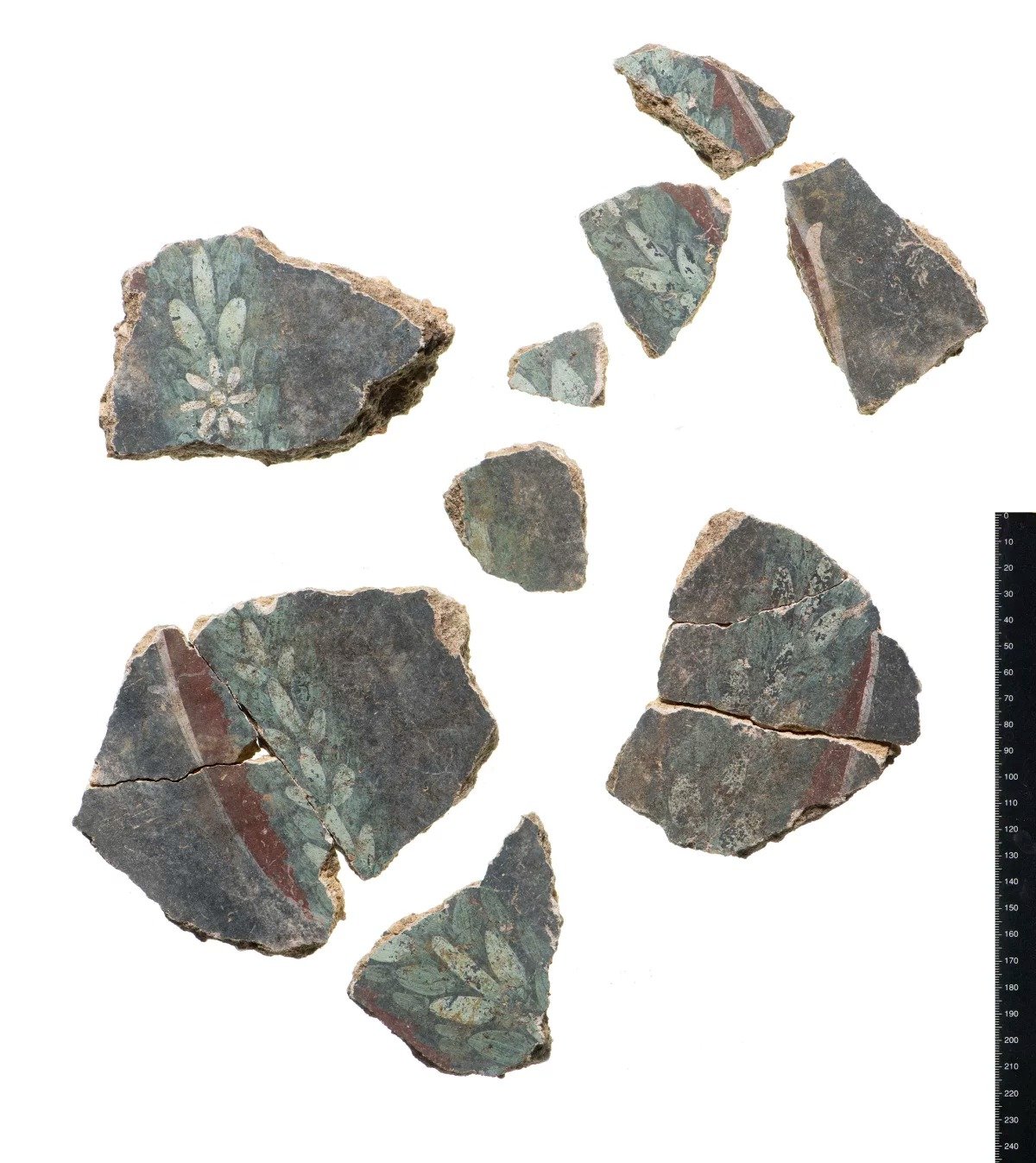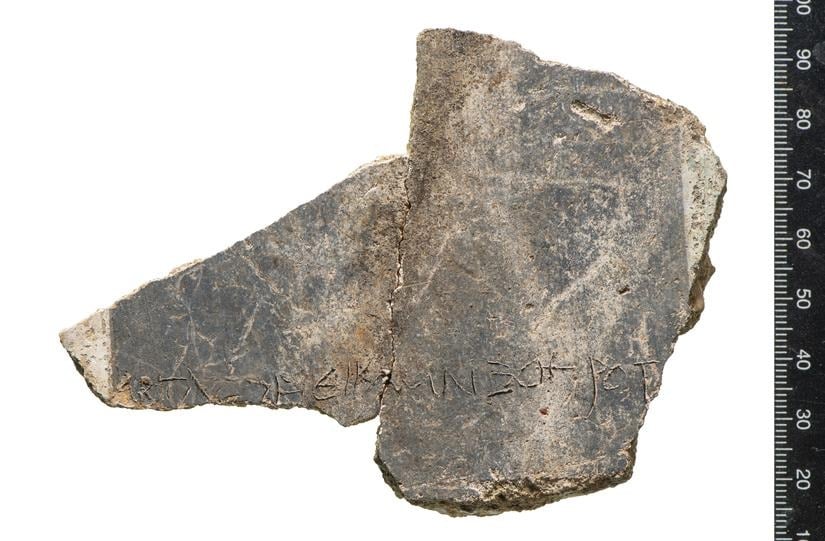Archeologists Solve Ancient Roman "Jigsaw Puzzle" In London
Language
Reading Level
Listen to Article
Alignment

Researchers at the Museum of London Archaeology (MOLA) have painstakingly reconstructed a stunning collection of ancient Roman frescoes. These decorative wall paintings once adorned a building in Londinium, the ancient Roman settlement that would later become London. Dating back over 1,800 years, the colorful fragments represent one of the largest finds of painted Roman plaster in the city.
The MOLA archeologists stumbled upon the fresco pieces in 2021 and 2022 while excavating a construction site in Southwark, London. Alongside the fragments, they also uncovered a large Roman mosaic and the remains of a mausoleum — clues that they had come across something important from the Roman era.

Rebuilding the frescoes was no easy task. With no photos or drawings to guide them, Han Li and his team had to rely on instinct, experience, and a lot of patience. They sifted through thousands of pieces, carefully searching for matching shades of paint, edges, and patterns. Sometimes, connections were made based on just a few flecks of surviving color.
"It was like assembling the world's most difficult jigsaw puzzle," said Li. "Many of the fragments were very delicate, and pieces from different walls had been jumbled together."
But the effort, which took over two years, was well-worth it. The completed murals revealed scenes filled with birds, fruits, flowers, and ancient Roman musical instruments. One wall featured bold geometric paneling and a striking yellow background. The color had only been found once before in a Roman palace in London. The MOLA team believes the same artists may have painted both sites. Elsewhere, the walls mimicked exotic stones, including yellow marble from North Africa. These design choices, along with the structure's location in an affluent part of Roman London, suggest the owner may have been wealthy.

The building's exact purpose remains a mystery. Its lavish decor suggests it may have been a high-end home, or even a luxury hotel. But the scientists also found an inscription of the entire Greek alphabet etched into the fragments. Similar markings found in Italy were thought to have been checklists. This has led Li and his team to wonder if the structure might have been a warehouse.
Whatever the case, the frescoes, revealed on June 23, 2025, offer a vivid window into life in Roman London. According to MOLA’s Andrew Henderson-Schwartz, the artwork is proof that Londinium wasn’t just a remote outpost.
"They’re [the Romans] investing in London,” he told BBC News. "And they’re seeing it as a place to settle in, a place to stay."
Resources: Smithsonianmag.com, BBCnews.com, Artnet.com

Get the Workbook for this article!
Workbook contains: Article, Reading Comprehension, Critical Thinking Questions, Vocabulary in Context (+ answers), Multiple Choice Quiz (+ answers), Parts of Speech Quiz (+ answers), Vocabulary Game (+ answers)Cite Article
Learn Keywords in this Article
15 Comments
- showgirlsavvy13about 2 monthsthats crazy!!
- lulukat2 monthswoahhh, thats really cool! You would need A LOT of patience to do that :0
- stellaa2 monthsamazing,crazy,fun,woohoo,great.
- bojihepofawi3 monthsits crazy
- 852128sophie3 monthsSo amazing❤️ It's not easy to put them together when handling such fragile pieces!
- classroom23983 monthsthat's interesting
- gimkitlover3 monthsWow! Even though its old it still looks really pretty. (At least that fragments that they showed.)
- i_love_god3 monthsWow in that picture there's a lot of puzzle pieces i wonder how long it took to find all the right pieces?
- duvajozotopa3 monthsforever probably
- zemyjicoluda3 monthssuper cool
- sokazibozajo3 monthsits super cool but some piece's are missing
- vivakybicyzi3 monthsThats kinda sad knowing you found some big jigsaw puzzle just for it to be almost completed and no pieces left
- mewybybylome3 monthsJames says, "And I thought putting together 100 piece puzzles was hard!" Grandma says, "I can't believe anyone has the patience to put this together."